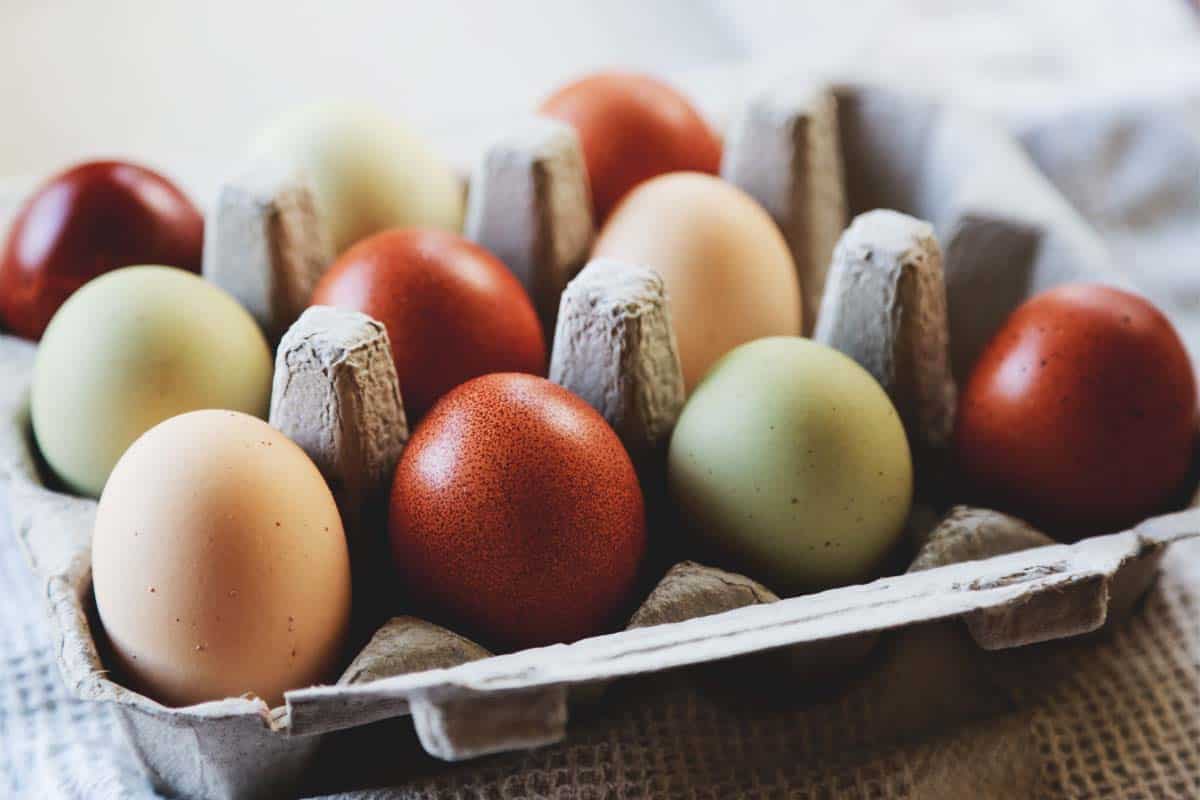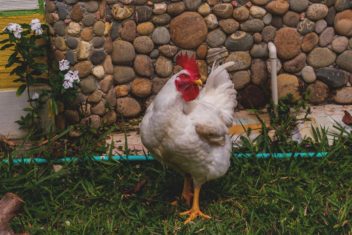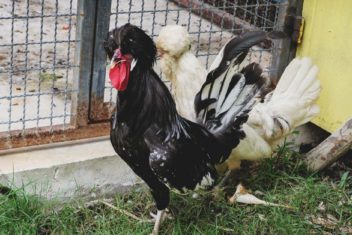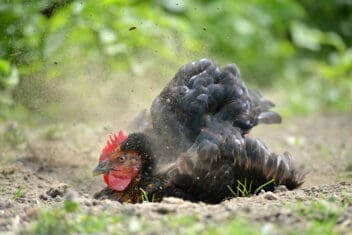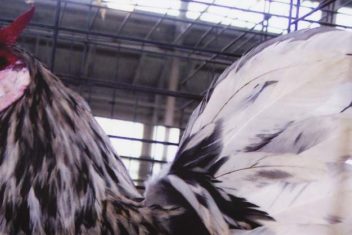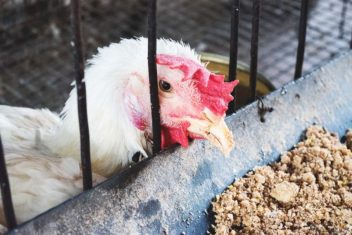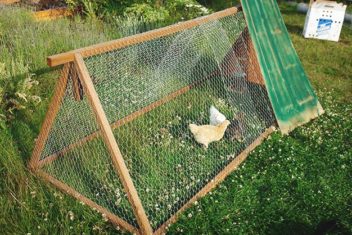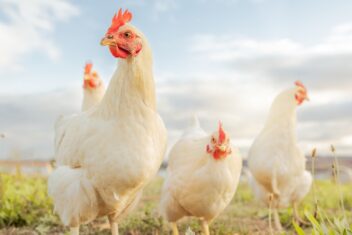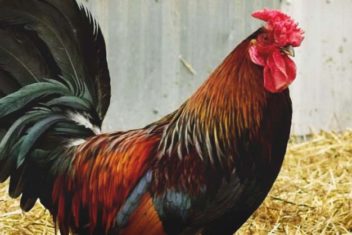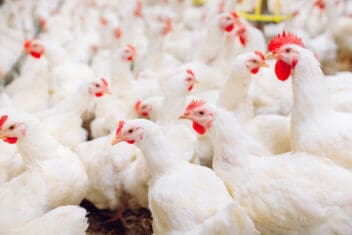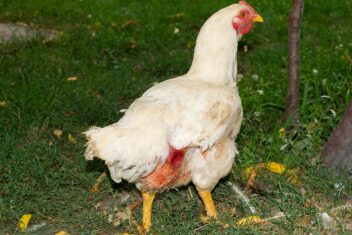Have you ever considered what it would be like collecting an Easter basket full of colorful eggs from your hens every day? Trust me, it’s one of the best parts about keeping chickens and will never fail to excite me. Experienced chicken breeders have become very experimental with coloring and speckles on their eggs recently.
All of this experimenting makes for an absolutely stunning egg basket. Breeding chickens for egg color is incredibly rewarding, but it involves a lot of trial and error.
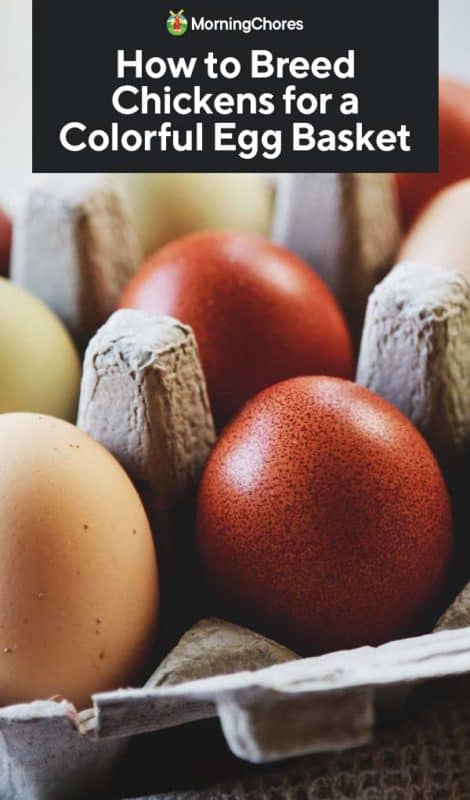
Buying vs Breeding Chickens for Egg Color
Choosing to breed your own colorful egg layers is quite an undertaking that isn’t for everyone. When breeding chickens for egg color, especially outstanding and unique egg colors, it can take many generations, lots of fails, and definitely some frustration.
The flip-side is the ecstatic feeling you’ll get when your favorite project hen lays a gorgeous egg, the cross you’re excited about finally hatches and you discover the cross that creates your ideal egg layer.
If you don’t have the time, money or desire to spend years working towards your dream egg layer, buying from a passionate project breeder may be a more viable option. The initial cost of rare chicks like these can be a bit much, but when you think about all the work that went into the bird, it’s definitely worth it.
When searching for a breeder, make sure you find a reputable one that will answer your questions and provide examples of their birds and eggs.
In the end, breeding your own chickens for egg color gives you more control over what your final product is. For those that are passionate about breeding projects or want to jump in headfirst, this is your perfect opportunity. If all you’re after is a colorful egg basket, you can achieve that without getting elbows deep in breeding projects.
Don’t just look at how expensive colorful egg layer chicks are because I promise you they come out cheaper if you buy them vs breeding them yourself.
In the end, it comes down to how much are you in it for a fun breeding experience and how much are you in it for colorful eggs? Consider your end goals and decide for yourself if breeding or buying your easter egg layers is the best option for you.
Chicken Breeds to Use When Breeding for Egg Color
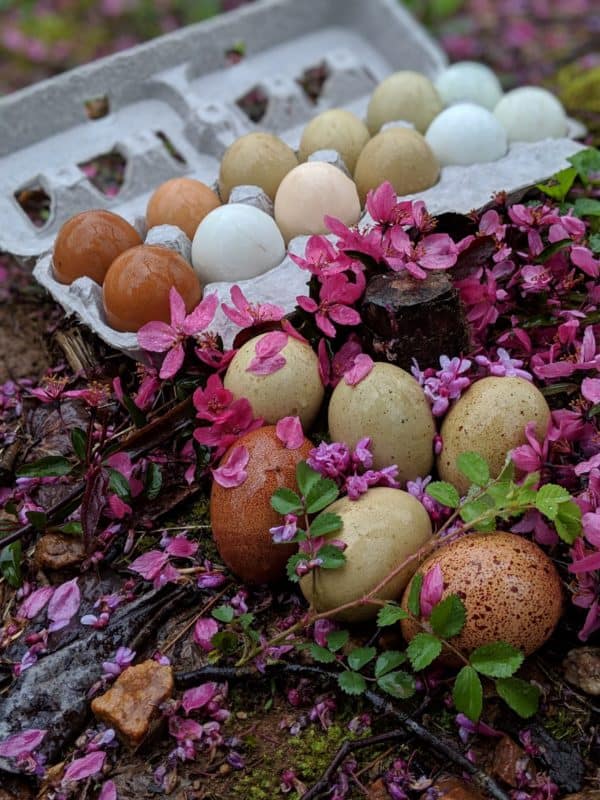
Once you’ve decided that you’re going to dive into breeding chickens for egg color, you need to know what you’re working with. There are many different colored egg layer purebred chickens that can be crossed to create new hybrids that lay new colors.
You’ll want to learn about the chickens you have to work with so you can decide which ones appeal to your breeding projects.
When it comes to acquiring most of these breeds, they won’t be cheap at all if you are purchasing high-quality birds. You’ll want to make sure you’re getting good quality chickens to make sure that they pass on the correct traits that each breed is supposed to carry.
Dark Brown Egg Layers

1. Marans
Marans are a well-known breed that is widely loved for their intense chocolate colored eggs. Finding good quality Marans can be slightly difficult depending on the time of year. In some cases, you may need to get on a waitlist once you’ve found a reputable breeder.
This French breed is a must-have for anyone that wants to breed a gorgeous dark brown egg layer. Additionally, you can always breed purebred Marans if you just want some beautiful chocolate eggs in your nesting box.
2. Welsummers
Welsummers are another dark brown egg layer that is especially loved for all the speckles that are on their eggs. When breeding with Welsummers, many breeders will use them in their olive egger program to make speckled olive eggs.
Welsummers aren’t quite as widespread as Marans, but they can be pricey if you’re looking for high-quality birds.
Blue Egg Layers
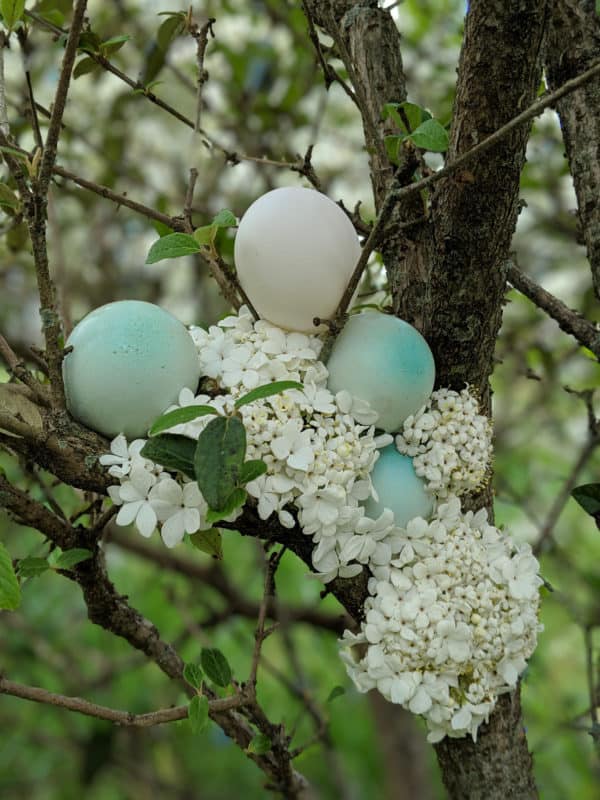
1. Ameraucanas
Ameraucanas are the old standby for a brilliant blue egg layer. These birds are quite fun to use in spearmint and true blue projects. Ameraucanas are not quite as pricey as some colorful egg layers, but you’ll always want to make sure you’re buying true Ameraucanas and not Easter Eggers.
2. Legbars
Although good Legbars aren’t the easiest to come across, they are absolutely wonderful blue egg layers to work with. Legbars are an autosexing breed, which means you can determine the gender as soon as these chicks dry off.
Now wouldn’t that make breeding projects so much easier to not raise an entire batch of chicks to adulthood only to have 75% roosters?
3. Easter Eggers
Although Easter Eggers are a colorful egg layer, it’s never recommended to use them in a breeding project. If you’re making a fun and whimsical cross that you don’t particularly care about the outcome, you could use an Easter Egger.
However, since this breed doesn’t consistently pass on the same genetics, Easter Eggers won’t work well when you’re breeding for specific traits and characteristics.
Creating Hybrids
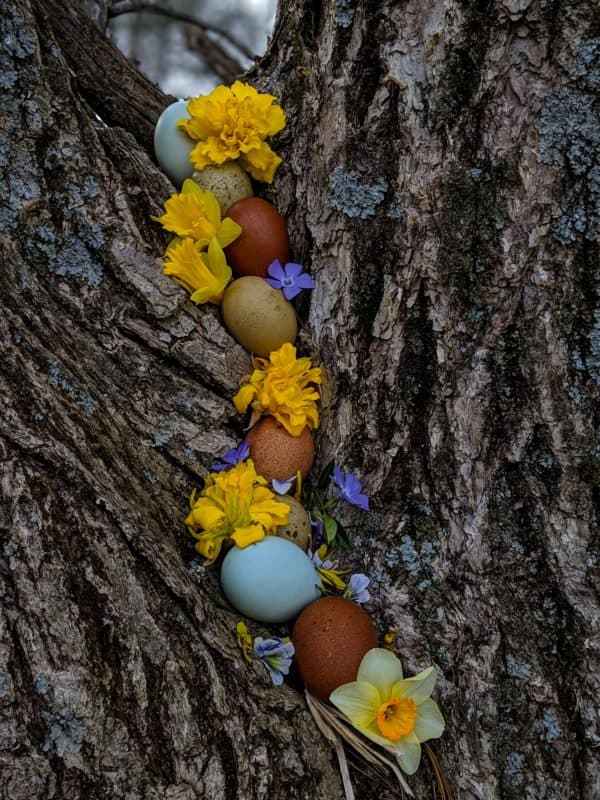
Now it gets exciting! You’ve got your breeds for colorful eggs and you have many possibilities for interesting hybrids and crosses you can create for new egg color.
1. Green Egg Layers
Creating a green egg layer is one of the most simple but fun crosses you can create. To breed a green egg layer, you’ll want to cross a blue egg layer with a dark brown egg layer.
For instance, if you put a Black Copper Maran rooster over a flock of Splash Ameraucana hens, you’ll create a Blue F1 Olive Egger. Other possible combinations could be a Cream Legbar rooster over a flock of Maran hens for another fun F1 Olive Egger.
Later, we will discuss what the F part of Olive Egger means and how to breed a darker olive layer.
2. True Blues
Another interesting cross is a true blue egg layer. To create a blue egg layer, you have to cross an intense blue egg layer with a white egg layer. An example of such a cross would be a Cream Legbar rooster over a flock of White Leghorn hens.
Your resulting chicken would be a sky blue egg layer with excellent egg production because of the White Leghorn genetics.
Getting Creative
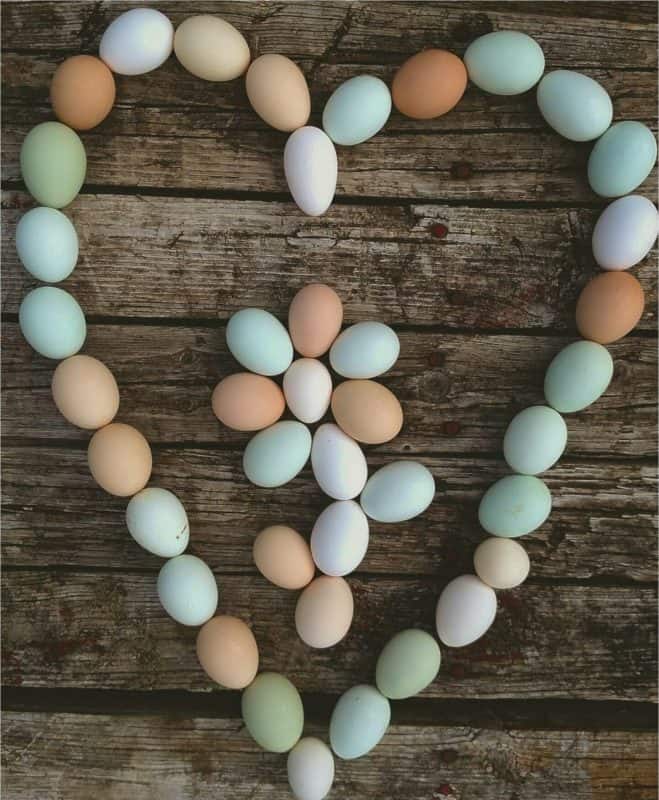
Once you’ve created some basic hybrids, you can get experimental with additional crosses using these birds.
The worst part about extensive breeding like this is having to wait so long for your birds to start laying! If you started with your purebred birds as chicks, you’ve had to wait for them to grow up and start laying so you could breed the hybrids you wanted.
Now that your hybrids are all grown, you can create new crosses and wait for them to grow up just to see what color eggs they’ll lay. See what I meant when I said buying unique crosses straight from a breeder is far less labor-intensive?
Regardless of how crazy the waiting game can be, playing around with breeding projects is no doubt an exciting and rewarding process.
1. Breeding Using Hybrids
When breeding using hybrids, you’ll usually need to breed a hybrid to a purebred if you want controlled results. Crossing two hybrids can be fun, it will just have incredibly varied results because of all the different genetics you’re combining.
Crossing two Olive Eggers will result in chicks with all different feathering and egg colors. If you feel like having fun and experimenting, this is a combination that will definitely keep things interesting.
2. Intensifying Olives
Remember how I said blue egg layers x dark brown egg layers resulted in an F1 olive egger? You might be wondering what the F and 1 mean here. F stands for filial, which means “denoting the generation or generations after the parental generation”. The 1 means it’s the first generation after the parental generation.
You may be wondering how we get F2, F3, and so on for our olive egger generations? To get an F2 olive egger, breed an F1 olive egger back to a purebred dark egg layer such as a Marans.
Once you have your F2 olive egger, you would breed that bird back to your purebred dark egg layer. With each generation, the shade of the egg deepens to more and more of an olive color.
3. Breeding for Speckles
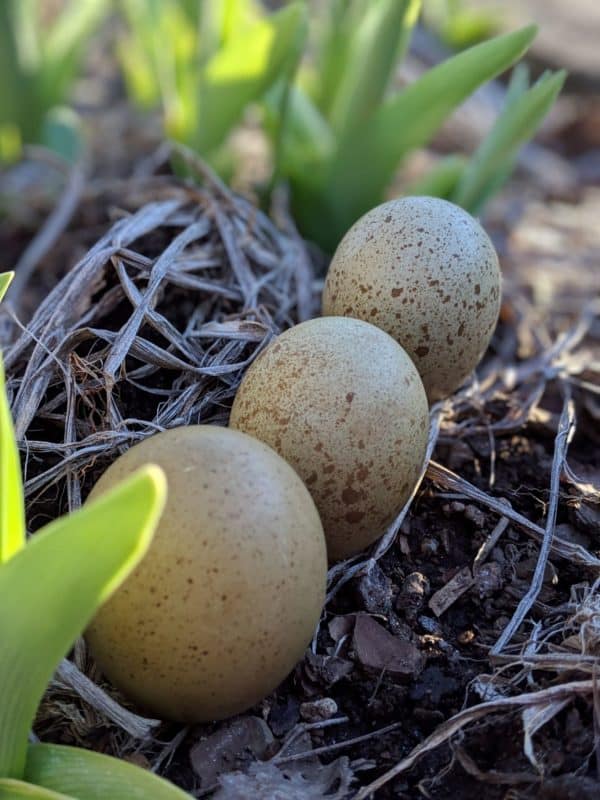
Now that we have all the colors of the rainbow in the chicken world covered, let’s add some contrast to our eggshells. The only thing that makes me happier than a gorgeous green egg is a gorgeous, speckled green egg.
To breed for a speckled green egg layer, you’ll use Welsummers in your olive egger breeding program. Breeders will often alternate between Marans and Welsummers as the generations deepen with olive eggers to maintain speckles and a dark color in the resulting eggs.
If you don’t care as much about the darkest olive possible, you can exclusively use Welsummers in your breeding program for a heavy dosage of speckles.
4. Spearmint Egg Layers
Who would have thought you could get so many eggshell colors from chickens? I’m seriously wondering why the only egg colors our grocery stores supply are white and brown eggs. Spearmint isn’t as heavily focused on as the rich and dark egg colors, but they are certainly pretty eggs.
To achieve a pretty spearmint egg, you’ll need to cross an F1 olive egger with a purebred blue egg layer. The most popular choices for spearmint egg layers are usually Ameraucanas or Legbars.
Breeding Responsibly

It’s important to make sure that health and vigor remains in each generation of your breeding projects. It can be easy to focus solely on the egg color and forget to pay attention to important things such as temperament and health.
Always avoid inbreeding whenever possible to make sure you’re constantly introducing new genetics to your breeding flocks. If you have an especially aggressive rooster, it’s not ideal to use him in your breeding projects.
It is not difficult to breed healthy and vigorous birds as long as you carefully choose your breeding birds. Observation is key to make sure you’re only using the healthiest birds for your breeding projects.
Enjoying the Journey
It’s easy to get caught up in a failed breeding project or the lost hatch of your favorite hybrid. However, farming comes with mistakes and breeding chickens for amazing egg color comes with much trial and error.
It’s important to enjoy your successes, learn from failures and never stop having fun with your experiments and endeavors.
ED – Speaking of fun, all these images belongs to the author – Savannah Brown.
